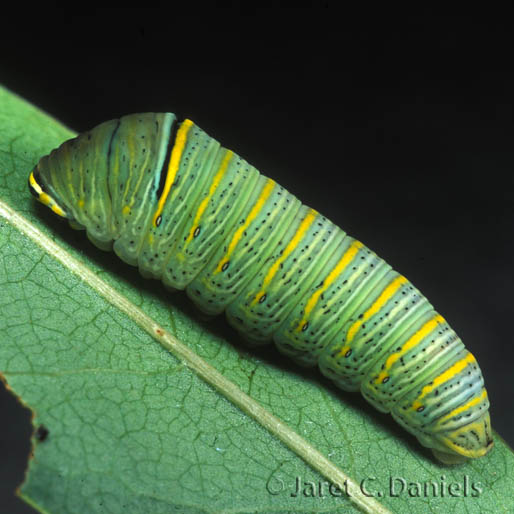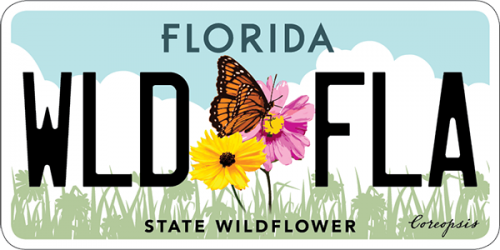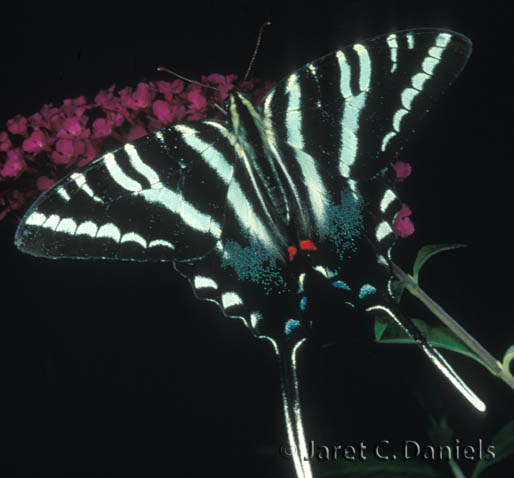- Family name: Papilionidae/Swallowtails
- General description: Wings greenish-white with bold black stripes and borders; hindwing with prominent red spot and blue scaling near single extremely long, white-tipped tail. Ventral hindwing as above but with distinctive red median band. Seasonally variable; summer form individuals are larger, darker overall, and have longer hindwing tails than spring individuals.
- Field Marks: white wings with prominent black stripes; hindwing with very long black tail tipped in white; ventral hindwing with red median stripe
- Sexes: appear similar
- Wingspan: 60-90 mm
- Life Cycle: Egg: light green, spherical, laid singly on host leaves Mature larva: variable; green, green with yellow and bluish transverse stripes, or charcoal with yellow and bluish transverse stripes Chrysalis: brown or green
- Number of Generations: Three or more

- Flight Season: February-November
- Abundance: Common
- Habitat: Woodlands, forest margins, scrub, waterways, roadsides, and pastures; occasionally gardens
- Larval Host Plants: Pawpaw (Asimina spp.)
- Similar Species:
- Additional Information: Adults have a low, quick, and highly erratic flight. Seldom encountered in urban areas. Range is limited in Pennsylvania, New York, Kansas, Nebraska, Iowa and Wisconsin.
- Range in Florida
 The Florida Wildflowers & Butterflies projects at the Florida Museum are sponsored in part by the State of Florida and the Florida Wildflower Foundation, Inc.
The Florida Wildflowers & Butterflies projects at the Florida Museum are sponsored in part by the State of Florida and the Florida Wildflower Foundation, Inc.
